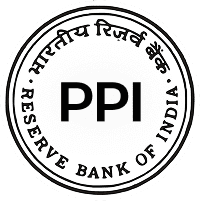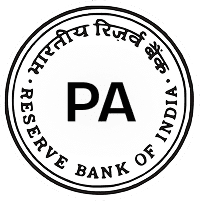A well-performing payment gateway is more than a transaction tool. It directly affects how users experience your brand, how much revenue you collect, and how smoothly your operations run. Every interaction at the payment stage carries weight. If something fails, the sale is lost, and the user may never return.
For today’s businesses, payments are not just a technical step. They form a key part of the user experience. Metrics help you measure what truly matters. They let you track how users respond, where failures happen, and how each small issue affects larger business outcomes.
By focusing on precise data, businesses can take control of their checkout flow. Reliable payment processing technology supports decision-making with evidence, not guesswork. It helps identify weak points and allows teams to make changes that improve results.
Metrics such as transaction success rate, conversion rate, chargeback rate, and uptime offer a full view of how the payment journey performs. Each one tells a story about what your customers experience and what your systems deliver.
This blog explores the most important metrics and explains why they matter. With a strong understanding of these signals, businesses can turn their payments gateway partner into a tool for growth and efficiency.
Read more: Payment Gateway Integration Guide
Core Performance Metrics for Payment Gateways
Tracking the right performance metrics helps businesses understand how well their payment gateway is functioning. Each number reflects a different part of the user’s journey. These core metrics show what impacts revenue, customer satisfaction, and operational efficiency.
Transaction Success Rate
The transaction success rate measures how many payment attempts go through without failure. A high success rate means users can pay quickly and without friction. A low success rate means money is being left on the table, and users may not return.
In high-performing systems, the success rate should remain above 98 percent. Anything below that should raise questions about technical errors, bank declines, or integration issues.
Common causes of failed transactions include:
- Incorrect card or UPI details
- Timeout errors from banking partners
- Poor API connectivity between systems
Improving this rate requires technical reliability, fast response times, and a streamlined user interface. Businesses should monitor this daily, especially during peak periods.
Conversion Rate
The conversion rate tracks how many users who reach the checkout page actually complete their payment. A strong checkout experience helps guide users to the finish line. A weak one causes drop-offs.
Several factors affect this metric:
- Length of the checkout flow
- Clarity of the payment form
- Visibility of payment methods
- Unexpected charges or delivery delays
Improving the conversion rate requires simplifying the user journey, removing confusion, and reducing steps. Forms should ask for only what is needed. Call-to-action buttons must be clear and placed where the user expects them.
Regular A/B testing helps refine each element in the flow. Mobile responsiveness also matters since many users transact on their phones. A slow or broken mobile experience directly lowers this number.
Chargeback Rate
The chargeback rate shows how many transactions are disputed by customers after payment. A high rate increases costs, damages trust, and may cause financial service providers to raise fees or revoke access.
A healthy chargeback rate stays below 1 percent. Going above that limit may lead to reputational damage and platform penalties.
Chargebacks can occur due to:
- Unrecognized charges
- Poor communication on refund policies
- Fraudulent transactions
- Delayed product delivery or service failure
To lower this rate, businesses must ensure their billing details match what the customer sees. Descriptions must be clear on receipts. Refunds should be processed promptly. Support must be easy to reach when customers have questions.
Fraud Rate
The fraud rate refers to how many transactions are flagged or confirmed as fraudulent. Tracking this is critical because unchecked fraud affects customer trust and increases costs.
Fraud patterns differ across industries. Some face more card testing attempts. Others deal with fake accounts and identity theft. What remains constant is the need to act before damage spreads.
Reducing the fraud rate involves:
- Using multi-layer authentication
- Setting transaction velocity limits
- Applying risk scores to detect patterns
- Verifying payment sources without adding too much friction
There is a balance between detection and usability. Too many steps at checkout may frustrate genuine customers. Too few may let threats through. The goal is to build a system that stops threats without hurting trust.
Each of these metrics—transaction success rate, conversion rate, chargeback rate, and fraud rate—tells a story. Together, they form a reliable view of how your payments are performing across technical, financial, and human touchpoints.
Businesses that track and act on these numbers consistently are better positioned to grow. Payments are not just a backend tool. They are a direct link between your product and your customer’s trust.
Read more: Top 10 Payment Gateways in India
Financial Metrics Impacting Gross Margin
Understanding how payments affect profitability begins with a close look at financial indicators. These metrics connect payment system performance with business outcomes. Each one directly influences margins, scalability, and decision-making.
Total Revenue
The first number to watch is total revenue processed through the payment gateway. This includes all successful transactions, whether from local buyers or international ones. Tracking this helps identify growth patterns across time periods, markets, and product lines.
If revenue dips, the issue could be tied to a drop in transaction volume, an increase in failed payments, or changing customer behaviour. Looking at total revenue alongside user activity gives teams early warning before more serious problems appear.
Regular reporting also helps with financial forecasting. Weekly or monthly comparisons show what’s working and what may need attention.
Gross Margin
Gross margin reveals how much money is left after covering the direct costs of delivering a product or service. In the context of payments, this includes processing fees, chargeback losses, currency conversion costs, and any commissions paid to third-party providers.
A low gross margin may mean you’re paying too much per transaction or losing money due to inefficiencies. Reviewing gateway costs against actual collections helps tighten the gap between what is earned and what is lost.
Also read: How to Calculate Payment Gateway Cost for your Business
To improve margins, businesses can:
- Negotiate better rates for high transaction volume
- Remove unused services from their payment tech stack
- Identify and reduce high-risk transactions that cause chargebacks
Even small improvements in processing costs can add up over time.
Transaction Volume
Tracking transaction volume shows how many purchases are completed within a given period. This metric reflects customer activity and gateway performance.
A sharp rise could signal growth, promotions, or seasonality. A sudden drop might point to checkout issues, technical failures, or changes in demand.
Higher transaction volume may also reveal scaling limits. Systems must be tested to handle larger loads during campaigns or seasonal peaks. If a gateway slows down or fails under pressure, revenue and trust are at risk.
Knowing the average number of transactions per hour, per region, or per device type helps optimize the infrastructure behind each sale.
Read more: A to Z of Payment Gateway
Operational Reliability Metrics
Reliable operations are the foundation of every payment system. Even the best-designed checkout flow will fail if the gateway is unstable or slow to respond. The metrics in this section reflect the real-time health of your infrastructure and its impact on user experience.
Uptime
Uptime refers to the percentage of time your payment gateway is available and functioning without issues. This is a core indicator of system reliability.
Anything less than 99.9 percent uptime can cause serious disruptions. Missed payments affect not just sales, but also inventory, customer satisfaction, and trust.
Monitoring tools should track uptime continuously. Alerts must be triggered immediately if the system slows or stops. A well-maintained gateway includes redundancies that prevent single points of failure.
Payment Gateway Errors
Payment gateway errors occur when a transaction fails due to technical problems rather than user mistakes. These include API errors, timeout issues, and mismatches in response data.
When left unchecked, errors affect the checkout experience, reduce the transaction success rate, and frustrate users. Common causes include:
- Outdated integration methods
- Network interruptions
- Failure to validate responses correctly
Tracking error types, frequency, and location helps businesses act quickly. Clear error logs allow teams to fix root causes instead of just symptoms.
Payment Gateway Failure Rate
The payment gateway failure rate reflects how many transactions fail at the gateway level. This differs from user-side failures like card declines.
High failure rates often point to poor integration, unstable hosting, or overburdened infrastructure. Reducing this rate requires a combination of monitoring, load testing, and reliable fallback systems.
Keeping failure rates low ensures smoother customer journeys and protects revenue at scale.
Enhancing the Checkout Experience
A smooth and reliable checkout experience is essential for completing a sale. Even small delays or design issues can cause hesitation or drop-offs. When users reach the final step, the interface must build confidence and reduce friction.
The layout should guide users from the cart to payment without confusion. Each action should feel natural. Language must be clear. Labels and fields must explain themselves without added instructions.
Fast-loading forms and real-time input validation save time and reduce errors. These small adjustments make the entire checkout flow feel easier.
Mobile Payments and Accessibility
A growing share of transactions happens on mobile devices. A strong mobile experience requires more than just resizing a desktop screen. Buttons should be large enough to tap. Input fields must match the user’s keypad. Confirmation screens should not feel cluttered.
Mobile-first testing helps identify what slows users down or causes abandoned sessions. The goal is to make mobile as seamless as desktop, or better.
Integrating trusted payment methods also improves mobile usability. Popular wallets and direct UPI support reduce the time needed to complete a transaction. These tools are familiar to users and help build trust.
Also read: How mobile payment gateway facilitates easy payments
Technology and Support
Reliable payment processing technology reduces delays, confirms transactions instantly, and handles spikes in traffic. When integrated correctly, it blends into the checkout flow without disrupting the visual experience.
Working with a responsive payments gateway partner allows quicker resolution of issues. Support teams that understand your setup can identify where failures happen and how to prevent them.
An efficient payment experience does not just increase conversions. It creates trust, lowers refunds, and keeps users coming back.
Read more: Common Mistakes to Avoid While Integrating Payment Gateways
Conclusion: Leveraging Metrics for Strategic Advantage
Tracking payment performance is not about collecting numbers for reports. It is about understanding how your systems affect people, processes, and profit. Every metric—from transaction success rate to gross margin – tells a story about what is working and where friction exists.
By reviewing these indicators regularly, businesses can catch problems early. A drop in conversion rate may reveal checkout confusion. A rise in fraud rate may show gaps in protection. These are not just technical signals. They reflect the health of the entire user journey.
Metrics also support smarter planning. When you know your transaction volume at peak times, you can prepare systems in advance. When you understand your payment gateway failure rate, you can ask better questions of your vendors.
A reliable payment gateway supports growth when it performs consistently, adapts to user expectations, and gives you data that drives improvement. Investing in the right tools and tracking the right numbers helps you protect revenue, improve trust, and stay competitive.
The best businesses treat payments as a strategic function, not a background task. With clear insights and ongoing attention, you can turn your payment infrastructure into a source of long-term advantage.








